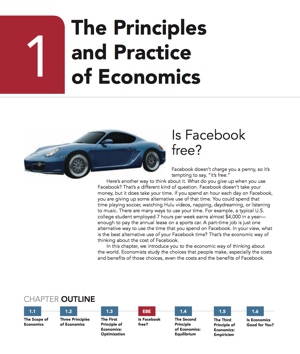Why are so few women majoring in economics?
Women are hugely under-represented in economics. This is true in the “real world,” but it’s equally true in college. Nationwide, there about three male economics majors for every female, and it’s not much better at elite institutions like Yale where males outnumber females by more than two to one.
Why is this the case? Some people might point to the technical or mathematical nature of the field, but on average STEM (Science/Technology/Engineering/Math) majors are more than half female. Even math itself is less male-dominated than economics. At the same time, economists study lots of substantive areas that should have broad appeal to prospective college majors including health, the environment, poverty, and other more traditionally gendered areas like “the family” and discrimination.
Unfortunately, it doesn’t take much time to come up with reasons why women don’t choose to major in economics. Here are two big ones:
-
Students rarely get a chance to interact with a female economist as their instructor, their teaching assistant, or someone working in the real world. From my conversations with women who do major in economics, they often talk about being inspired by that one female instructor or TA.
-
Much of the teaching materials, in particular textbooks, are written by men. I don’t think they are explicitly trying to push women away from the field, but when the first picture on the first page of the book is a blue race car, you’re not trying hard enough to appeal to women.
I believe addressing these issues would bring more women into the field, and economist Amanda Bayer makes a strong case that the economics profession could benefit from more diversity. If you’re at all interested in this topic, you should absolutely check out Amanda’s website, Diversifying Economic Quality for evidence-based strategies to increase diversity in the field.
Claudia Goldin at Harvard is now leading the Undergraduate Women in Economics Challenge, a project funded by the Sloan Foundation to bring more women into the field. I am proud to say Yale is participating as one of twenty randomly selected “treatment” schools that will be implementing a variety of strategies. Our first step in the project is to gather and analyze historical data to see what might be going on in our own university and how we can most effectively address the issues. For example, we are going to see which female students take the introductory classes and then go on to take an intermediate level class. Is this more likely when the student has a female instructor or teaching assistant? We should have answers before the end of the summer.
The second step will be to devise and actually implement a series of interventions. We are already planning to bring back some female former students that majored in economics to talk to prospective majors. We’re also going to follow the Brown Economics Department’s lead and provide support for peer advising by matching senior economics majors to prospective majors that might have questions.
I’m very excited about the project and hope to have much progress to share over the next year.
